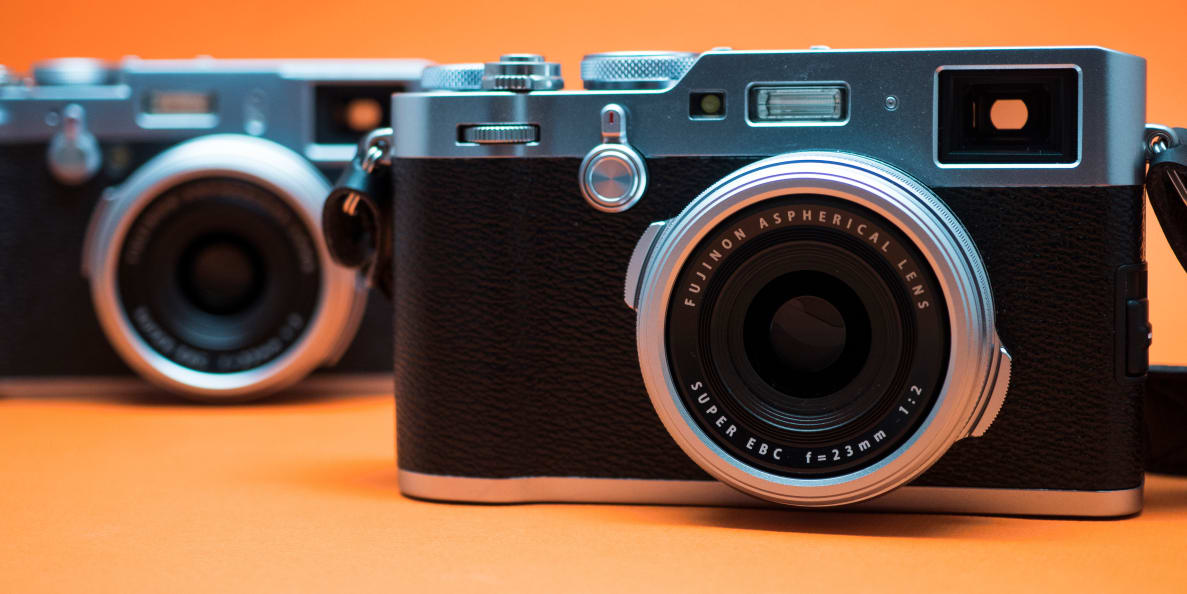The new Fujifilm X100F (MSRP $1,299) is the 4th edition, and it improves on the original concept in every way. By adding a new 24-megapixel X-trans APS-C sensor into a reinvented, improved body, Fuji continues the proud tradition it established six years ago. It might not looks worlds apart from the previous Fujifilm X100T, the small tweaks (like the addition of a lovely AF point selection joystick) and changes add up. It has the retro look I've come to expect from Fujifilm, the tactile controls that beg you to go out shooting every day, and the signature filmic looks I love.
That said, the X100F isn't an earth-shatteringly big leap over the X100T. Its button placement introduces a couple new snags, and video is still a bonus more than anything. Unless you're an X100 devotee, you'll be happy enough sticking with your X100T for a little while longer. You'll need to be okay with its fixed 35mm f/2 equivalent lens, but optional converters turn that into 28mm or 50mm, so you're not entirely stuck with a single field of view. Still, it's not quite the same as buying into a real camera system with zooms and primes to choose from.
For owners of the older X100S, this is a big step-up and for X100 neophytes, it's a perfect introduction to the modern Fujifilm family.
What We Like
A new sensor increases performance, and puts out pretty pictures too Last year, Fujifilm started putting a brand-new 24-megapixel X-trans sensor into its flagship mirrorless cameras. Both the awesome X-Pro2 and X-T2 saw big performance upgrades thanks to an increased number of phase detection points, as well as better noise control at high ISOs.
Of course, getting eight extra megapixels doesn't hurt. The X100F gets the same sensor, and it's a very nice improvement. Coupled with the signature fixed Fujinon 23mm f/2 lens, this camera is ready for shooting in just about any lighting. In our labs, I noticed a big improvement in detail retention at ISO 3200, making even ISO 6400 legitimately useful in most circumstances.
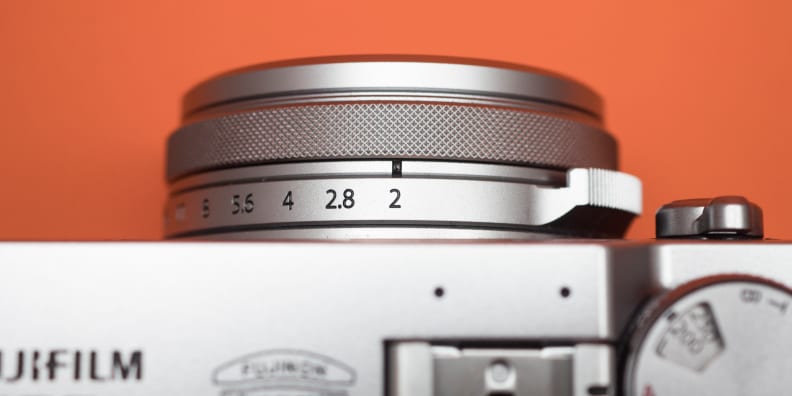
Sharp optics and tight, tactile controls are what the X100F is all about.
Even though this camera isn't really designed for high-speed burst shooting with continuous AF, it feels surefooted in single AF mode and only hunted in low light occasionally. That's to say that autofocus seems like it's been improved a bit, but it's still far from perfect. But, despite using both contrast and phase detection methods, it's still not as super-fast to find a target as something like a Micro Four Thirds camera nor is it quite as precise as a full-blown DSLR.
Fuji's film simulations still bring the magic Fujifilm's Xtrans sensors have earned praise for their color rendition, but for me, the magic comes from its JPEG engine. Featuring film simulation color modes, Fujifilm gives users plenty of reasons to shoot RAW+JPEG (or sometimes just JPEG alone). Even if you're typically a RAW-or-nothing photographer, the range of looks you can accomplish in-camera is astonishing.
{{ photo_gallery name="Samples" }}
Personally, my favorite Fuji look is Classic Chrome, which faithfully apes a certain desaturated retro look. New in this model is a monochrome mode that Fujifilm has based on its own Acros film stock. These color modes have the subtlety and sophistication that's often lacking in modern post-processing, putting Instagram's gaudy, gritty filters to shame in every regard.
Rearranged, improved controls are a win for one-handed operation Previous X100 cameras had fine physical controls, but my preference has long been the Ricoh GR II, which has ergonomics on-lock. Ricoh's compacts have typically put controls close at hand, with everything falling right where you need it to be. Nothing on the GR is difficult to find or accurately press, and the buttons are distributed in a logical, thoughtful manner. Ever since the original X100, Fujifilm split the controls up, with some buttons to the left of the rear LCD, and the rest to the right. This meant that accessing features like the AF point selection or playback mode required using your left hand to press.
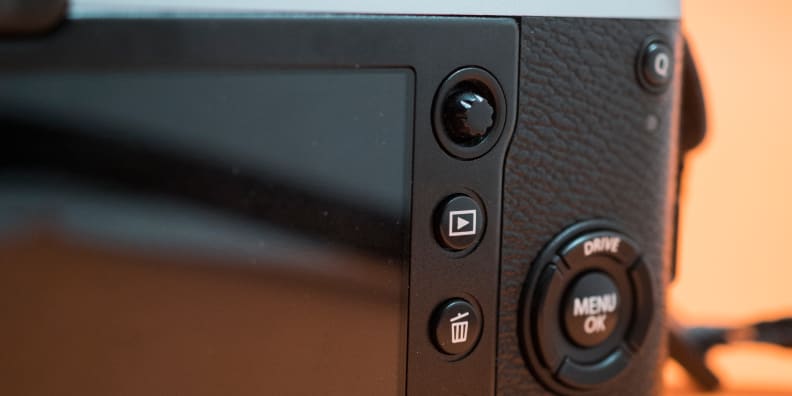
Rejiggered controls and a new joystick make the X100F far better to use with one hand.
At long last, the X100F's designers dumped the controls located on the camera's left side, and simplified the layout of all the buttons. Most controls are easily operated with your right hand, which is a big deal for me. What's an even bigger deal is the inclusion of an AF point selection joystick. It makes picking your target easy whether you're shooting with the rear LCD or the hybrid viewfinder. The joystick is just pronounced enough to snag it with your thumb without even thinking, and boom you've set your AF point. A feature like this used to be reserved for high-end DSLRs, but Fujifilm has put it on all its flagships and it's changed my expectations in the past year. I want joysticks everywhere, dang it!
What We Don't Like
The Q button is far too easy to hit, power toggle is finicky For all of the X100F's improvements, there are a few areas where the design has regressed. The one change that drove me absolutely batty was the migration of the quick menu button. This very useful button used to be at the tip of my thumb, but it's now shifted over to the right, making it super easy to unintentionally press while just gripping the camera.
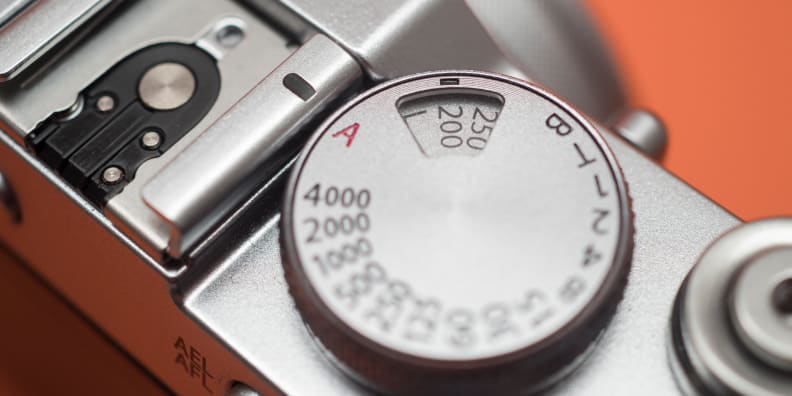
The prominent shutter speed dial now features an ISO selection ring inside it.
I also had problems with the power switch. Sure, the X100F has a more pronounced grip that helps hide a bigger battery. But, the curve of said grip juts out in a way that makes it harder to snag the power switch's front-facing tab. While I appreciate a camera that's hard to power off accidentally, I think the X100 team has made this camera just a little too difficult to reliably power off without looking.
Video is way better, but still mostly an afterthought In our labs, the X100F shot good video in bright light, but y'know what? Fujifilm still isn't the top brand to get if you want to shoot video. Even Olympus provides more advanced functionality and features like clean HDMI-out. The addition of in-body image stabilization makes something like the Olympus OM-D E-M5 Mark II a stronger choice if you need a compact hybrid shooting solution.
We measured 1000 lw/ph vertical and 850 lw/ph horizontal when testing the X100F at its highest quality of 1080/60p. This is what I expected from the X100T in 2014, but Fujifilm's X-trans sensor still had big issues with moiré then.
As it stands, the X100F is finally competent enough to shoot the occasional clip, but I think Fujifilm is sending a clear message: if you want to shoot video, buy the fully-featured, 4K-capable X-T2 instead.
No touchscreen, rear display is still fixed The X100 series has always emphasized its unique, praiseworthy hybrid viewfinder. But, as much as I love the hybrid optical/electronic setup, I think that Fujifilm could have thrown us a bone and at least put a touch-sensitive rear display on the X100F. As it stands, the only Fuji like this with a touch display is the X70. Now, I get that Fujifilm has made the focus point selection way, way better with the addition of a handy-dandy joystick, but I like to see different styles accommodated, and a touchscreen would enable even more modes of shooting.
What is also occasionally irksome is the lack of a flip display on the rear of the X100F. The Fujifilm X70 also has this feature, making it super convenient for waist-level candid shots, as well as off-angle shooting from the ground. It's especially killer street shooting, and if that's a supposed aim of the X100F, this remains a sticking point.
Conclusion
A modern camera worthy of its heritage
The thing about the Fujifilm X100F is that no other camera quite comes close to its blend of performance, image quality, and control. Sure, it's retro as all get out with its satisfying aperture ring and shutter speed dials, but things like the hybrid viewfinder and new AF point selection joystick give you the best of yesteryear and today. Did we mention how pretty this camera is? It's bloody gorgeous.
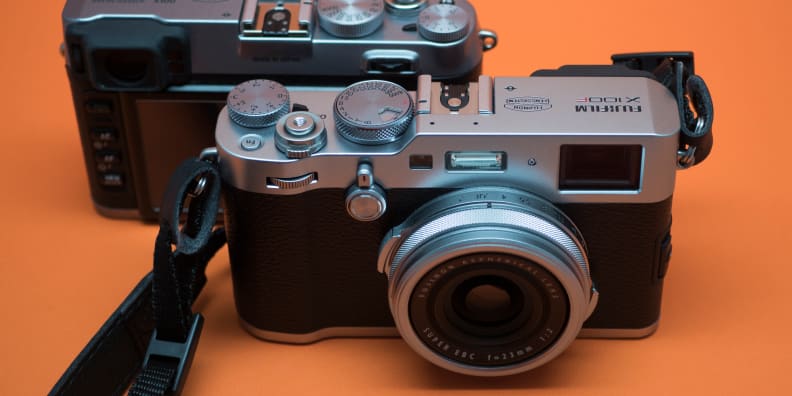
Even though it's the fourth iteration of the X100 concept, the X100F still pays respect to the original FinePix X100.
Because it's so unique, it's also hard to find anything else like it. If you don't want to spend $1,300, and don't mind a wider, 28mm equivalent lens, then you have the Ricoh GR II and Fujifilm X70 to pick from. Both are competent cameras with very high image quality at lower prices, but neither has as many megapixels nor the AF prowess of the X100F.
For me, the closest thing I can think to compare the X100F to is Fuijfilm's own X-Pro2. Performance from the X100F is about as good in many circumstances, and when you cross-shop the X-Pro2 with 23mm f/2 lens kit with the X100F, the two are about evenly matched, with the same focal length, but the X100F is more than $800 cheaper. Granted, the X100F isn't weathersealed, and you're stuck with the a lens you can't swap for a zoom. It's still great to see Fuji offer some of its best technology in a camera so slim at such a relatively reasonable price.
$1,300 is still a lot to pay, but there's nothing like a Fuji. If you're remotely interested in owning an X100-series camera, the X100F is undoubtedly the greatest iteration yet.
Meet the tester
Brendan is originally from California. Prior to writing for Reviewed.com, he graduated from UC Santa Cruz and did IT support and wrote for a technology blog in the mythical Silicon Valley. Brendan enjoys history, Marx Brothers films, Vietnamese food, cars, and laughing loudly.
Checking our work.
Our team is here to help you buy the best stuff and love what you own. Our writers, editors, and experts obsess over the products we cover to make sure you're confident and satisfied. Have a different opinion about something we recommend? Email us and we'll compare notes.
Shoot us an email